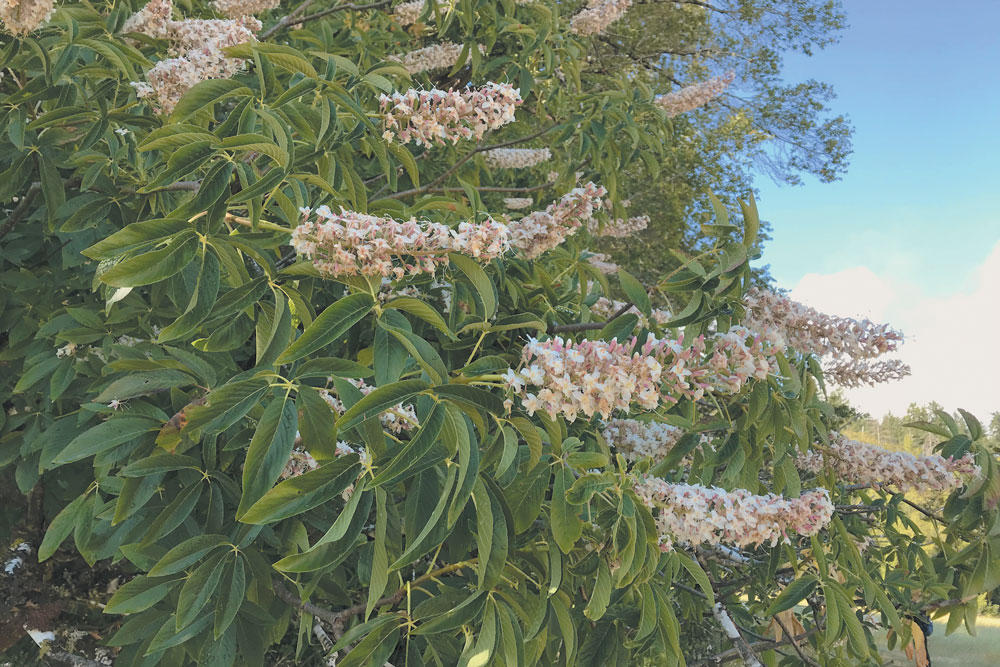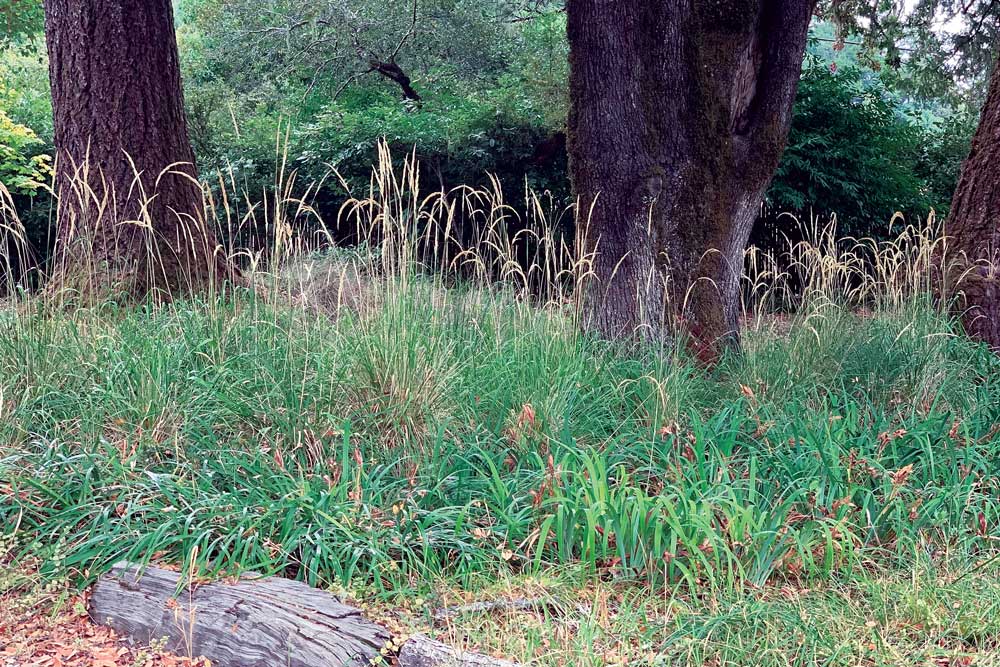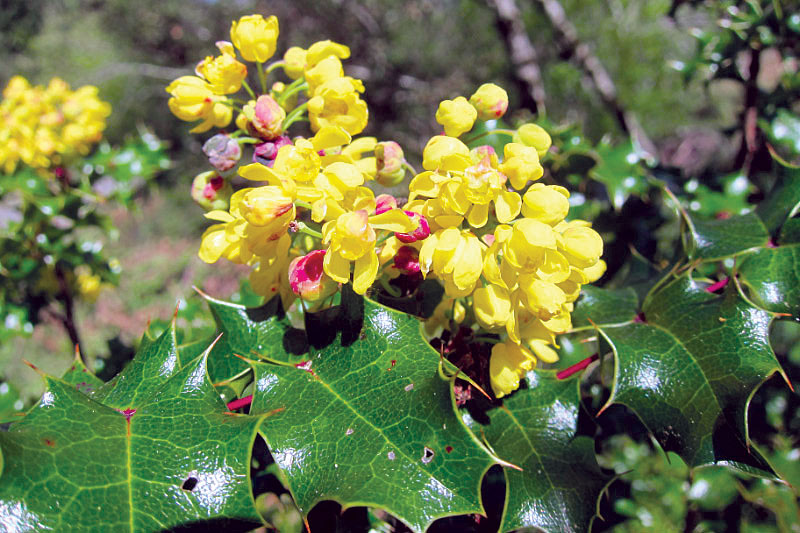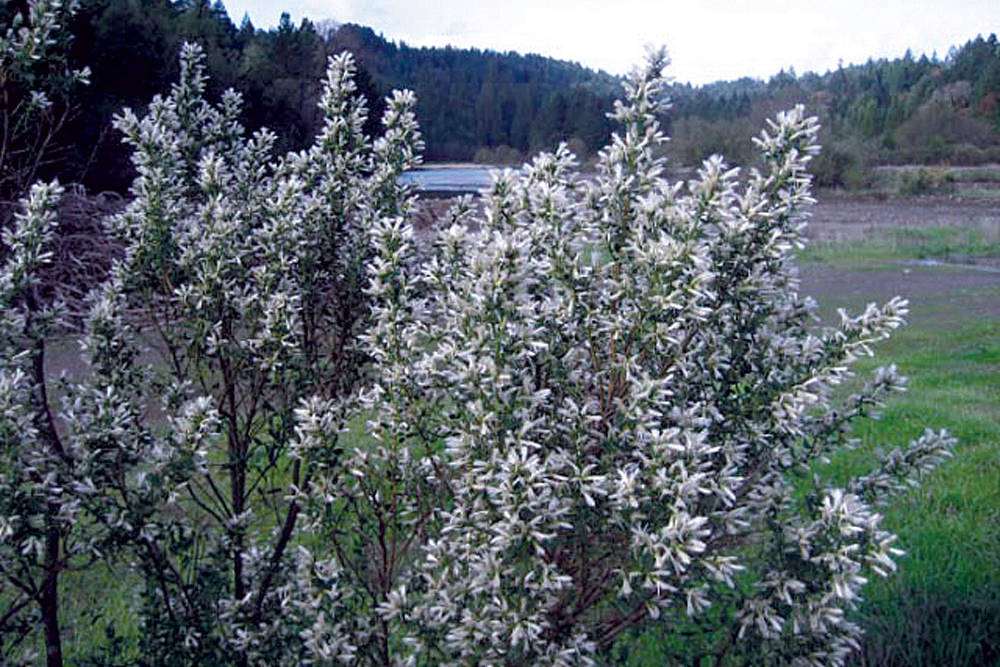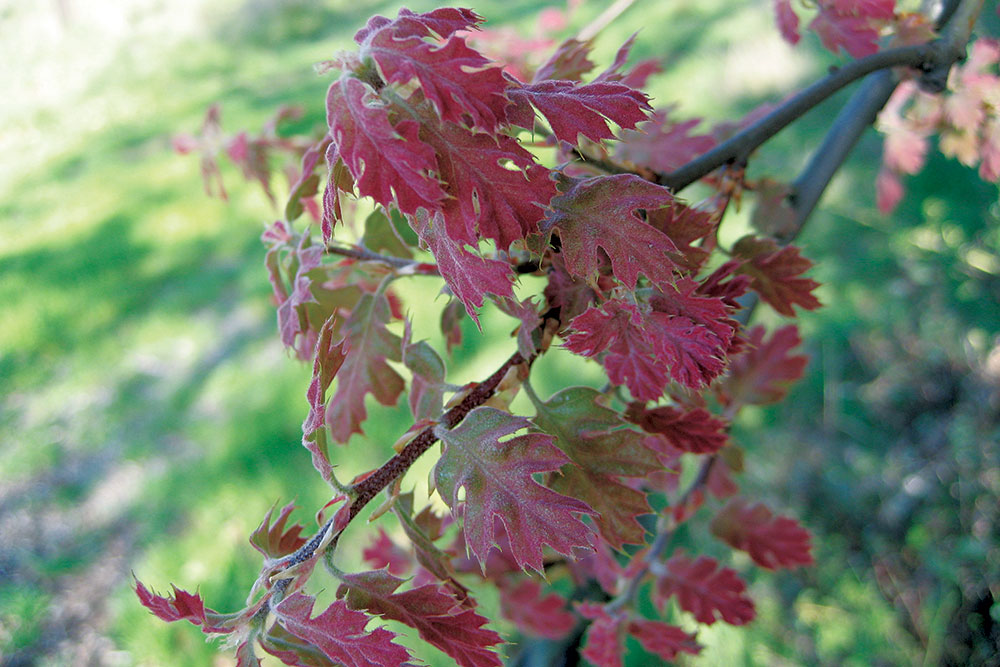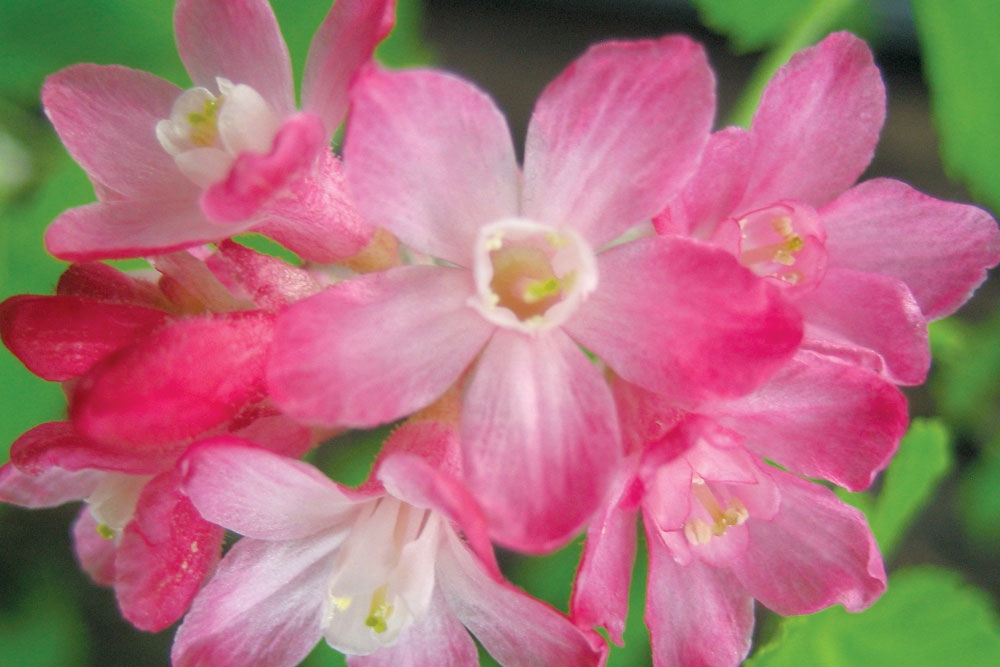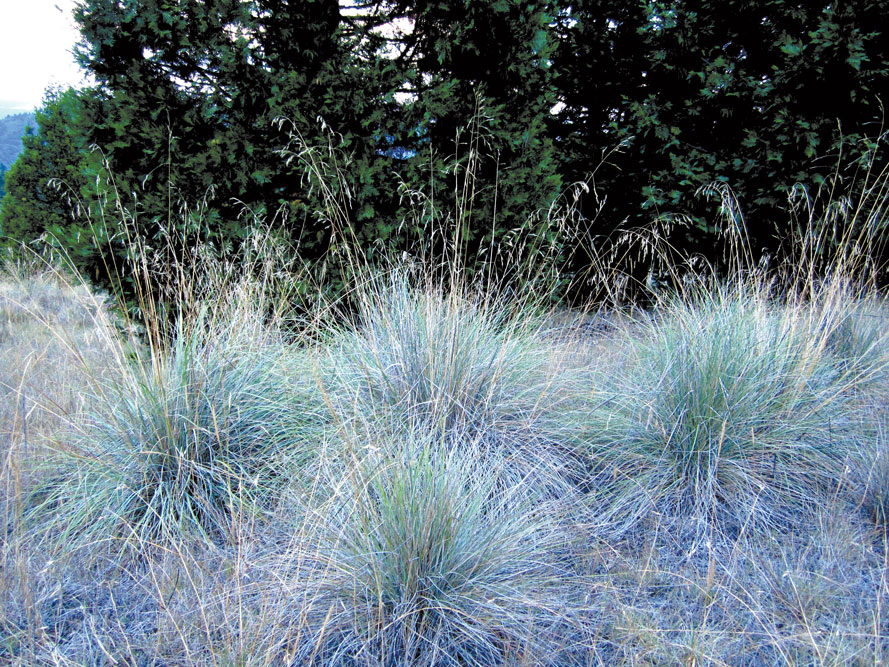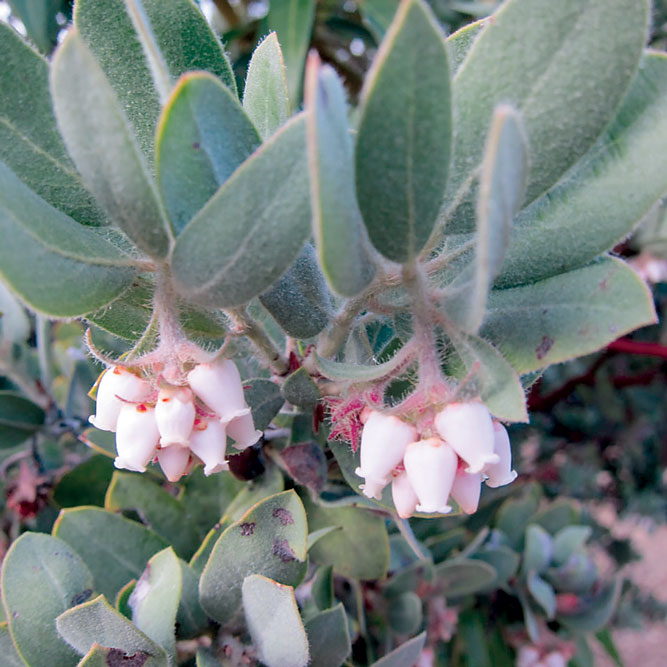Plant Notes
California Buckeye
Aesculus californica One of the first native plants to leaf out each year is California buckeye. Buckeyes don’t even wait for spring, leafing out in mid-winter, when moisture from rains is abundant. In California’s dry summer climate, many native plants have adapted to grow during the wet season and go dormant in the dry season;…
Read MorePacific Reedgrass in the Garden
Calamagrostis nutkaensis This article was adapted from an article written by Cheryl Lisin for the journal Grasslands, Vol. 33, No. 1, Winter 2023 Pacific reedgrass is a large, showy perennial bunchgrass that ranges from Alaska to Central California, where it grows along the coast as well as in the mountains of the Coast Range. It…
Read MoreOregon grape, Berberis aquifolium
Oregon grape is a beautiful shrub, especially when in bloom. The sweetly fragrant flowers bloom in late winter and early spring and are pollinated by bees and moths. After pollination, berries appear in clusters and ripen to a deep purple—hence the use of ‘grape’ in the common name. Birds love the berries, which are tart…
Read MoreCoyote Brush
Baccharis pilularis Coyote brush is an evergreen shrub that blooms in late fall and early winter, a time of year when there are few sources of nectar for small butterflies, predatory wasps, and flies. This makes coyote brush a valuable plant, ecologically speaking, as it supports thousands of insects that in turn support birds, other…
Read MoreBLACK OAK, WHITE OAK
A Succinct Guide to Distinguishing the Two Species California is home to more than 20 species of oaks, 10 of them occurring here in the Northwest corner of the state. Of these 10, six are evergreen and four are deciduous, losing their leaves in the fall. Two of our most beautiful species are deciduous: black…
Read MoreFlowering Currant: Ribes sanguineum
Many of California’s native shrubs are resilient to fire, surviving underground with their strong root systems. Shortly after a fire, these shrubs will sprout new growth from their root crown. One such crown sprouter is flowering currant, Ribes sanguineum, which, when in bloom is one of the showiest of our native shrubs. Blooming in late…
Read MoreBull Kelp
Nereocystis luetkeana It is amazing that something can grow up to 200 feet in one year! Bull kelp is the fastest-growing seaweed in the world and can grow up to two feet per day. This is especially amazing because bull kelp is an annual—germinating, growing, reproducing, and dying all within a year-long cycle. Bull kelp…
Read MoreCalifornia Fescue
Of the more than 300 grasses that are native to the state, California fescue is among the most beautiful. With its gray-green leaves, it is a bright spot in shady woodlands. A perennial bunchgrass, it forms dense, arching clumps about two feet tall, and in late spring it sends up flower spikes up to four…
Read MoreManzanita
One of California’s most beautiful native shrubs, manzanita, blooms in winter. If you happen to be near a blooming manzanita, you are likely to see and hear Anna’s Hummingbirds, who stay for the winter and feed on the flower nectar rather than flying south. Some manzanitas here in northwestern California start to bloom as early…
Read MoreKnobcone Pine
Pinus attenuata Plant Notes by Cheryl Lisin In the fall of every year, the cones of most species of pine trees release their seeds. The seeds then germinate with the coming rains, thus perpetuating the species. Knobcone pines are different. Known as closed cone pines, knobcones require heat, usually from fire, in order to open…
Read More
